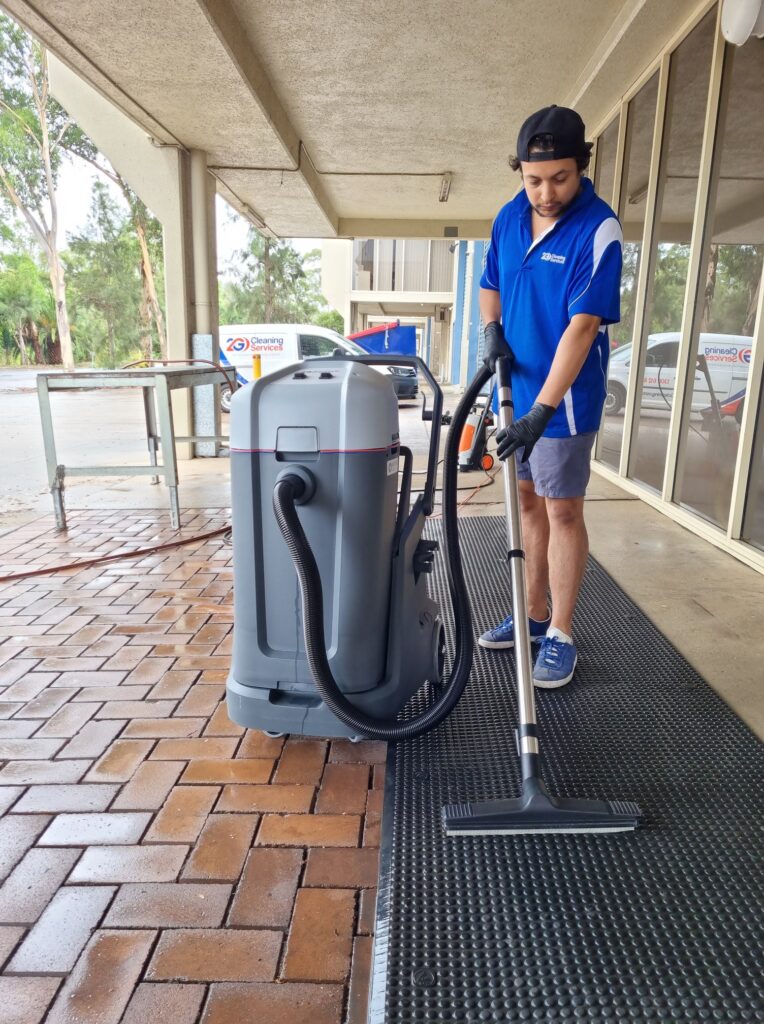Whether you own a company with many carpeted floors or operate a professional carpet cleaning business, maintaining clean surfaces requires proper equipment. Vacuum cleaners, steamers, and extractors are various machines, each with its own purpose and technology that delivers specific results.

Carpet extractor machines are becoming increasingly used in business spaces because of their efficiency in thorough sanitising and stain removal. So, how do these machines operate and differ from other carpet cleaners? And how can you choose the right option for your carpet cleaning company’s requirements?
What Is a Carpet Extractor Cleaner?
It’s a professional device used to deep clean fibres using hot water extraction technology. It swirls the carpeted floor or upholstery piece using a hot water and cleaning solution mixture to remove stubborn stains and grime; it then uses powerful vacuum suction to remove both the dirt and the detergent.
The method these machines use offers a thorough and effective cleaning, sanitising, and refreshing, leaving the carpets and upholstery looking like new. These devices are especially beneficial for commercial settings subjected to spills and high foot traffic. Investing in a professional carpet cleaning extractor is a smart move, as it delivers better results, leading to improved services that will attract future clients.
How Does an Extractor Work?

This machine can be operated fairly simply. It uses a wand to apply a mixture of water and cleaning solution straight onto the carpet. By deeply penetrating the fibres, this solution removes stains, grime, and dirt that a standard vacuum can’t.
Certain models have an agitation feature that scrubs the carpet mechanically to help remove stubborn stains and embedded dirt. The machine vacuums up the solution and the loose debris and grime after letting it sit on the carpet for a few minutes, leaving it cleaner and fresher.
One of the main benefits of carpet extractors is that they drastically cut down on drying time, so your carpet will be usable far sooner than with conventional techniques.
Is an Extractor Better Than a Carpet Cleaner?
When it comes to cleaning carpets, there is no one-size-fits-all solution that works for everyone. Various types of industrial cleaning machines have different purposes, and the right one depends on the cleaning requirements of the floors you regularly clean and your professional needs.
Although “carpet extractor” and “carpet cleaner” are terms frequently used interchangeably, their methods of operation differ. An extractor is a more sophisticated equipment that uses hot water extraction technology, whereas a carpet cleaner is a machine that cleans using various techniques like shampooing or bonnet cleaning. A regular cleaner works well for surface-level cleaning and basic maintenance; an extractor is more suited for deep cleaning since it can remove allergens, stains, and embedded debris from fibres.
Extractors are also very different from steam cleaners in terms of operation. A steam cleaner is suitable for quick carpet and upholstery sanitisation, as it uses hot steam that doesn’t penetrate as deep into the carpet fibres as extractors do. A high-quality carpet cleaning extractor is most satisfactory for deep cleaning and stain removal.
Moreover, the technology it uses (hot water extraction) is low-moisture and it allows carpeted and upholstered surfaces to dry fast, usually in an hour or two.
How to Choose a Carpet Cleaning Extractor?

Assessing factors like the vacuum system, pump, body type, and additional features is very important, as understanding these key components will simplify the decision-making process.
Body Type
Consider the machine’s portability and ease of movement. Lightweight and compact models are a better fit for small spaces or multi-level buildings while heavier-duty machines and ride-on models are better suited for demanding tasks.
If your business involves frequent travel between locations, such as janitorial services, a portable carpet extractor with excellent manoeuvrability is a practical choice. These models are easier to transport and operate across multiple sites.
Pumps
The pump determines how forcefully the cleaning solution is sprayed onto the carpet. PSI, or pounds per square inch, measures this spray force. Pumps with 100–200 PSI are suitable for light to moderate cleaning, while more powerful pumps are more suited for heavy-duty applications, offering greater pressure to tackle tough stains.
Select pump strength based on your cleaning requirements. For example, a 200 PSI pump is versatile enough to clean carpet, tile, grout, and upholstery. High-pressure pumps are especially beneficial for large-scale or frequent cleaning tasks, as they boost efficiency and ensure a deeper clean, even on thick surfaces.
Vacuum Motor
The vacuum motor significantly impacts suction power, affecting how well the machine removes dirt, moisture, and debris. Efficient suction results in faster drying times and more thorough cleaning.
Recovery/Solution Tanks
Tank size plays a major role in productivity. Larger tanks reduce the need for frequent refilling or emptying, which is particularly useful for businesses managing large-scale cleaning jobs, such as hotels or office buildings. Bigger tanks save time and improve efficiency during extended cleaning sessions.
Heater
Hot water is essential for breaking down tough stains and sanitising carpets. Machines with built-in heaters maintain the water’s temperature, enhancing cleaning performance. For businesses dealing with stubborn stains or odours, a machine with a high-powered heater ensures better stain removal and more effective sanitisation.
Warranties
Lastly, check the warranty offered with the product. A solid guarantee protects you against defects and mechanical issues, giving you added peace of mind. Extended warranties show how confident the manufacturer is in the quality of the goods. Many warranties also cover individual components, ensuring broader protection for your investment.






















